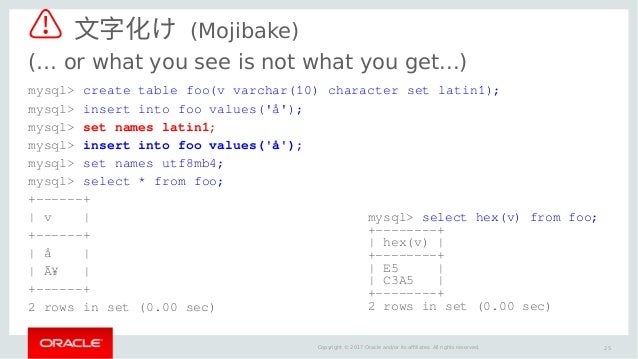

You can check that by using CSVI Analyser page. If you have collation looking good on tables and columns and you still have this error, Check if your import file is UTF-8 encoded. Here are some examples: With ORDER BY : Press CTRL+C to copy. COLLATE may be used in various parts of SQL statements. You need to replace this to the type of your column you are changing the collation.ĪLTER TABLE your_table_name CONVERT TO CHARACTER SET utf8 COLLATE utf8_general_ci ĪLTER DATABASE your_database_name CHARACTER SET utf8 COLLATE utf8_general_ci With the COLLATE clause, you can override whatever the default collation is for a comparison. Your_field_column_type is the data type of the column like VARCHAR(10). Here are the few queries which can be used to convert column name or table or database to required collation.ĪLTER TABLE `your _table ` CHANGE `your _column ` `your _column ` your_field_column_typeĬHARSET utf8 COLLATE utf8_general_ci NULL Each character set in MySQL is mapped to its unique. If you still continue having the error, check for the same issue in other related tables. A collation refers to a set of rules defining how MySQL database characters are compared and sorted. In the collation drop down look for utf8_general_ci and save the field. Click on the edit icon or Change link for the field, here it is product_gtin. Normally fields use utf8_general_ci as collation or check what is the collation for your other fields in the table.Ĥ. Select the Structure tab to see the complete field structure of the table.ĥ. Check the field which is having a different collation than other fields, in this example it is product_gtin. Look for the table having the issue, in this case it is #_virtuemart_products table.ģ. Go to PhpMyAdmin, select your database.Ģ. It also works if I use nchar instead of char. If I create the table without the collation clause at the end, it’s fine. The cause for this error is because two different fields are been set with two different collation in same table.ġ. The thing is, the default collation for the database is the same as that for the table. Illegal mix of collations (utf8_general_ci,IMPLICIT) and (utf8mb4_general_ci,COERCIBLE) for operation '=' Database cannot handle the mix of these collations and throw error like PyMySQL is released under the MIT License.One of the common issue which arises after migration of database is dealing with different collations in tables.


On the Basics tab of the Create SQL Database form, under Project details, select the desired Azure Subscription. DictCursor ) with connection : with connection. Under SQL databases, leave Resource type set to Single database, and select Create.
#Mysql collate password#
connect ( host = 'localhost', user = 'user', password = 'passwd', database = 'db', cursorclass = pymysql. The following examples make use of a simple table CREATE TABLE ` users ` ( ` id ` int ( 11 ) NOT NULL AUTO_INCREMENT, ` email ` varchar ( 255 ) COLLATE utf8_bin NOT NULL, ` password ` varchar ( 255 ) COLLATE utf8_bin NOT NULL, PRIMARY KEY ( ` id ` ) ) ENGINE = InnoDB DEFAULT CHARSET = utf8mb4 COLLATE = utf8mb4_bin AUTO_INCREMENT = 1 import pymysql.cursors # Connect to the database connection = pymysql.
#Mysql collate install#
To use MariaDB's "ed25519" authentication method, you need to installĪdditional dependency: $ python3 -m pip install PyMySQL Although database systems usually do permit altering the collation of an existing database, doing so can lead to complications it is recommended. You need to install additional dependency: $ python3 -m pip install PyMySQL For example, the default server-level collation in SQL Server for the 'English (United States)' machine locale is SQLLatin1GeneralCP1CIAS, which is a case-insensitive, accent-sensitive collation.

To use "sha256_password" or "caching_sha2_password" for authenticate, You can install it with pip: $ python3 -m pip install PyMySQL CHARACTER SET utf8mb4 COLLATE utf8mb4unicodeci ) as sql FROM. This package contains a pure-Python MySQL client library, based on PEP the utf8mb4unicodeci collation for databases, tables and columns in MySQL.


 0 kommentar(er)
0 kommentar(er)
